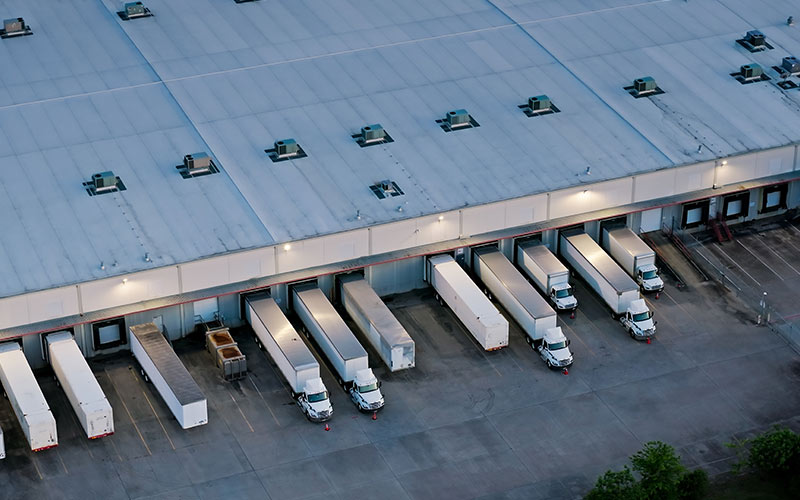Insights
- Kardex set an ambitious goal to double its business and modernize operations across its global footprint.
- Initial efforts were hindered by legacy systems, disconnected processes, and lack of organizational alignment.
- The North Star Program shifted focus from technology deployment to holistic transformation involving people, processes, and culture.
- With Infosys and SAP, Kardex adopted a cloud-first strategy and unified digital foundation to drive scalability and agility.
- The transformation delivered measurable outcomes, including harmonized global operations, faster decision-making, and improved customer engagement.

Kardex's SAP Transformation: Unifying Global Operations by Enterprise-Wide Integration
CIO Detlef Polysius, CFO Thomas Reist, and Infosys Program Sponsor Subhendu Paul share candid insights about consolidating more than 30 disparate ERP systems into a unified SAP on RISE platform.
Kardex, a global leader in automated storage and retrieval solutions, knew that staying ahead in a fast-changing market would take more than small tweaks. As the company set an ambitious goal of doubling its business and reaching 1.5 billion in net revenue, it embarked on a major transformation journey, focusing on modernizing operations and embracing digital innovation at scale.
In a recent Infosys Knowledge Institute (IKI) interview, Kardex’s chief information officer Detlef Polysius, chief financial officer Thomas Reist, and Infosys program sponsor Subhendu Paul shared how this transformation is unfolding.
While talking about how the company is transforming, Detlef Polysius explained:
“Automation is absolutely key for us. It has to start from the customer request and flow seamlessly through all processes and systems, so that we can deliver on our promise. Everything needs to work together, automated and integrated.”
That mindset reflects Kardex’s approach on making automation the backbone of transformation, ensuring every step from customer request to delivery runs like clockwork.
But this journey wasn’t just about adding new technology. It was about reimagining how Kardex operates across its global footprint, building an agile, data-driven, and customer-first organization that can scale quickly and respond to market shifts with confidence. To make that happen, the leadership team knew they had to break free from legacy systems and silos and create a unified digital foundation to power innovation and long-term growth.
The roadblocks to transformation
Even with big ambitions, Kardex’s early transformation journey wasn’t all smooth sailing. The company ran into some roadblocks that slowed progress, including:
- Too many disconnected systems: Over 30 enterprise resource planning (ERP) systems, siloed customer relationship management (CRM) systems, and scattered data sources meant redundant work, manual processes, and zero visibility into how all these disconnected systems were working, which made agility nearly impossible.
- Business and tech out of sync: Teams worked in silos, deploying solutions that didn’t match real operational needs.
- Tech-first, process-later: Instead of rethinking workflows, the focus was on new systems which replicated old inefficiencies in new platforms.
- Data headaches: No global data model and no structured migration strategy made managing historical and open data a nightmare.
- Change management gaps: Employees weren’t fully prepared or supported, leading to confusion and resistance. Plus, the implementation partner lacked the global muscle for a smooth rollout.
These challenges made one thing clear: Transformation isn’t just about new tools. It’s about aligning people, processes, and technology from the ground up. Kardex realized that modernizing systems without rethinking how the organization operates wouldn’t deliver real change. Success would mean breaking silos, redesigning workflows, building a unified data foundation, and fostering a culture ready to adapt and collaborate.
North Star program: Key changes adopted, and measurable outcomes achieved.
After reflecting on the challenges of its initial system rollout, Kardex came back with a renewed sense of purpose. It introduced the North Star Program, which brought a bold shift from simply deploying new technology to driving a company-wide transformation that brought people, processes, and culture together.
This time, Kardex put organizational readiness front and center. Change management, transition planning, data governance, and organizational design became the program’s core pillars. Senior leaders even stepped away from their day-to-day roles to dedicate themselves full time to the initiative, ensuring executive commitment and alignment across the business. As Thomas Reist shared in our interview, the program turned out to be “bigger than expected,” demanding not just financial investment but a fundamental rethink of how the company operates.
The North Star Program started as a necessity, which replaced Kardex’s aging SAP ECC system but quickly evolved into a strategic growth enabler. The company’s fragmented system landscape had created inefficiencies, inconsistent customer experience, and limited scalability. To double its business and expand into high-growth markets, Kardex needed a unified, streamlined digital foundation.
Kardex embraced new roles and ways of working to make that vision real. Cross-functional collaboration replaced silos with IT, finance, operations, and business teams working from a single source of truth. The company also adopted a cloud-first strategy through RISE with SAP, aligning with its vision for scalability and cost predictability.
This comprehensive approach delivered tangible improvements:
- Harmonized global processes: Production facilities in Germany and the US, which were once operating independently, now share best practices, shift workloads, and reduce duplication.
- Faster decision-making: Real-time data flow empowers leaders to act quickly and confidently.
- Improved scalability: Standardized processes and a unified system landscape allowed Kardex to scale their business.
- Financial and strategic gains: The program drives top-line growth through better customer engagement and bottom-line savings via efficiency. For Thomas Reist, the CFO, it also means better visibility into key performance indicators and future business models.
- Stronger organizational alignment: Change management bridged gaps between the project team and the wider organization, ensuring readiness for go-live and long-term adoption.

Infosys as a strategic partner for sustainable change
The partnership between Kardex, Infosys, and SAP was key to making this happen. Infosys acted as a trusted transformation partner, while SAP provided the technological backbone. Together, they built a platform not just for operational excellence but for sustained, strategic growth.
Infosys anchored the transformation with a cloud-first strategy using RISE with SAP, modernizing Kardex’s IT landscape with a simplified, scalable, subscription-based model. This shift laid the foundation for agility, cost predictability, and long-term scalability.
To maximize value, Infosys integrated advanced SAP ecosystem tools:
- SAP Signavio for designing and visualizing end-to-end processes, creating a single source of truth.
- SAP Cloud ALM for real-time change tracking and system monitoring, aligning IT with evolving business needs.
- SAP LeanIX for architectural visibility and managing dependencies across systems and teams.
Beyond S/4HANA, Kardex extended its digital transformation with SAP Field Service Management for field service operations, SAP Marketing Cloud for customer engagement, and SAP Digital Manufacturing to digitize shop-floor processes for efficiency and transparency.
This structured, phased approach standardized core operations, established common processes, and laid a solid foundation for future expansion. Kardex is now positioned to double its business, move toward shared services, and leverage AI-driven analytics on a unified data platform. The collaboration between Infosys, Kardex, and SAP ensured that technology, strategy, and business outcomes stayed in sync, making Kardex a standout leader in digital transformation.
Build a future-ready, integrated enterprise
Embarking on a large-scale digital transformation like Kardex’s requires careful planning and strong collaboration between business and technology teams. Drawing from Kardex’s experience, there are key best practices that organizations should follow to maximize the impact and sustainability of their transformation journey.
- Involve cross-functional leaders early: Engage leaders from all key business areas at the start to ensure technology choices align with strategic goals and foster strong collaboration among business and program teams.
- Prioritize change and data management from the beginning: Start change and data management early to maintain clear communication, fit-for-purpose data model, proper training, stakeholder alignment, and role clarity, ensuring smooth adoption and minimal disruption.
- Choose the right technology partner and platform: Select a partner with deep SAP experience and a scalable, flexible platform like RISE with SAP to support faster innovation and long-term growth.
By involving cross-functional leaders early, prioritizing change management from the outset, and partnering with experienced technology experts, organizations build a solid foundation for transformation. This approach unlocks new growth opportunities and helps businesses stay competitive in this fast-evolving market.




